Table of Contents Show
Deep Blue Sea was not a traditionally high-grade movie. It’s got some underdeveloped elements. Some of the character motivations were weak. It dangerously flirted with the line of utter ridiculousness. All that said, you know what the movie did have? Genetically modified sharks. Based on that alone, the movie’s actually a good deal of fun, but Deep Blue Sea offered a lot outside of this, enough to where it really deserves to be crowned as the prime example of good, bad-shark-cinema.
What Is Deep Blue Sea?
A group of scientists and other personnel (namely a shark wrangler and a chef) populated the weekend crew at Aquatica, a testing facility located in the middle of the ocean. It wasn’t your average testing facility though; there they genetically altered sharks (a major scientific ethics violation) to attempt to cure Alzheimer’s disease (at least it was a worthy cause). After one of these genetically altered sharks escaped the facility and endangered the lives of a crew of young adults out on their boat, a corporate executive from the company funding the project came out to make sure everything was on the up and up. At first, it all appeared to be; then, things turned bad.
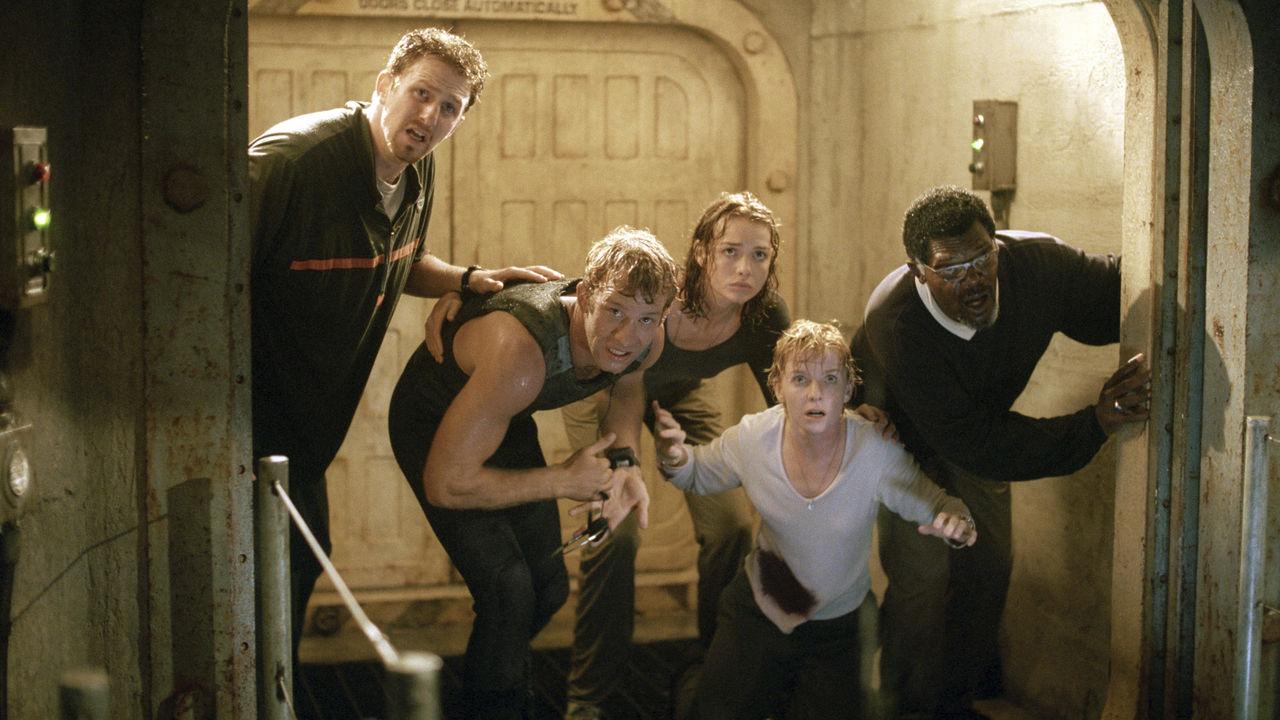
After successfully harvesting the protein complex from one of the sharks, a scientist is critically wounded from a shark bite. This spurred a rescue mission with paramedics flying to the facility. One problem though, the weather conditions were putrid. The helicopter lost control and crashed directly into the uppermost layer of Aquatica, dangerously compromising the structural integrity of the facility. Accordingly, the surviving crew had to escape the underwater facility quickly caving in around them, all the while maneuvering and outsmarting the sharks that lurk in the water. Deep Blue Sea got right what other bad shark movies can’t seem to figure out. It didn’t go off the rails with its quirkiness. It got close, for sure, but it didn’t cross the line. That’s the broader takeaway of the film, but the key factors to the film’s success are Samuel L. Jackson and the other enjoyable performances, the score, the escape plot, and the use of animatronic sharks.
The Characters
The cast of this movie was having an utter blast making this film, and it really showed. Samuel L. Jackson’s performance as Russell Franklin stood out as he played the wise, voice-of-reason character who gave deep and moving monologues. LL Cool J as the chef, Preacher, was interesting (in ways that are both good and bad, but more on that later). Thomas Jane was awesome as the shark wrangler, Carter Blake. He’s a bad-boy type with a criminal record and he’s thrust into playing the action-hero, leadership role.
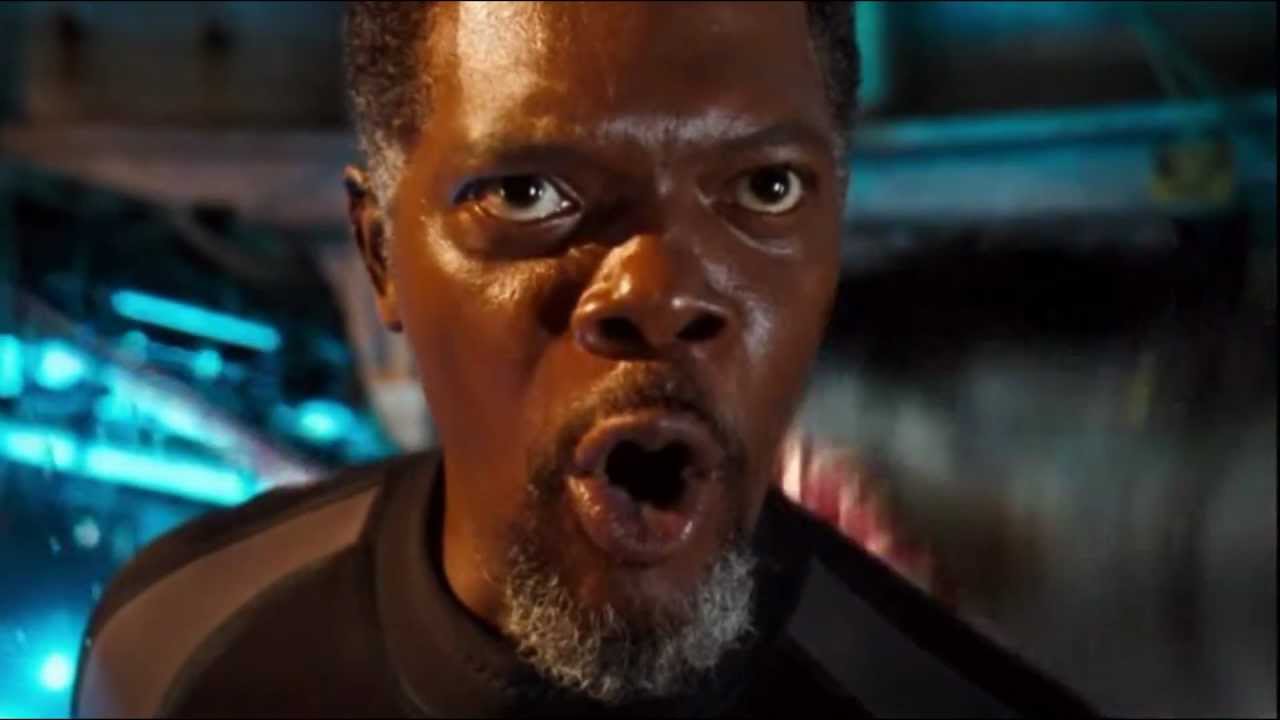
Saffron Burrows played the lead scientist, Dr. Susan McAlester. She’s cold and calculating and couldn’t seem to reconcile with the fact her project was the cause of this disaster. Additionally, Michael Rapaport, Stellan Skarsgard (a real actor’s actor whose appearance in this movie is surprising), and Jacqueline McKenzie all gave really solid supporting performances.
The Score
Was the score comparable to Jaws? No, but in a movie that had no other choice but to compete with the classic “dun-uh-dun-uh-dun-uh” theme, Trevor Rabin, who scored the music for the film, created some eerily tense and creepy music. While the score didn’t trump Jaws, the score in Deep Blue Sea was able to serve as a worthy adversary to the classic film’s theme and did a good job accompanying Deep Blue Sea’s genetically modified sharks.
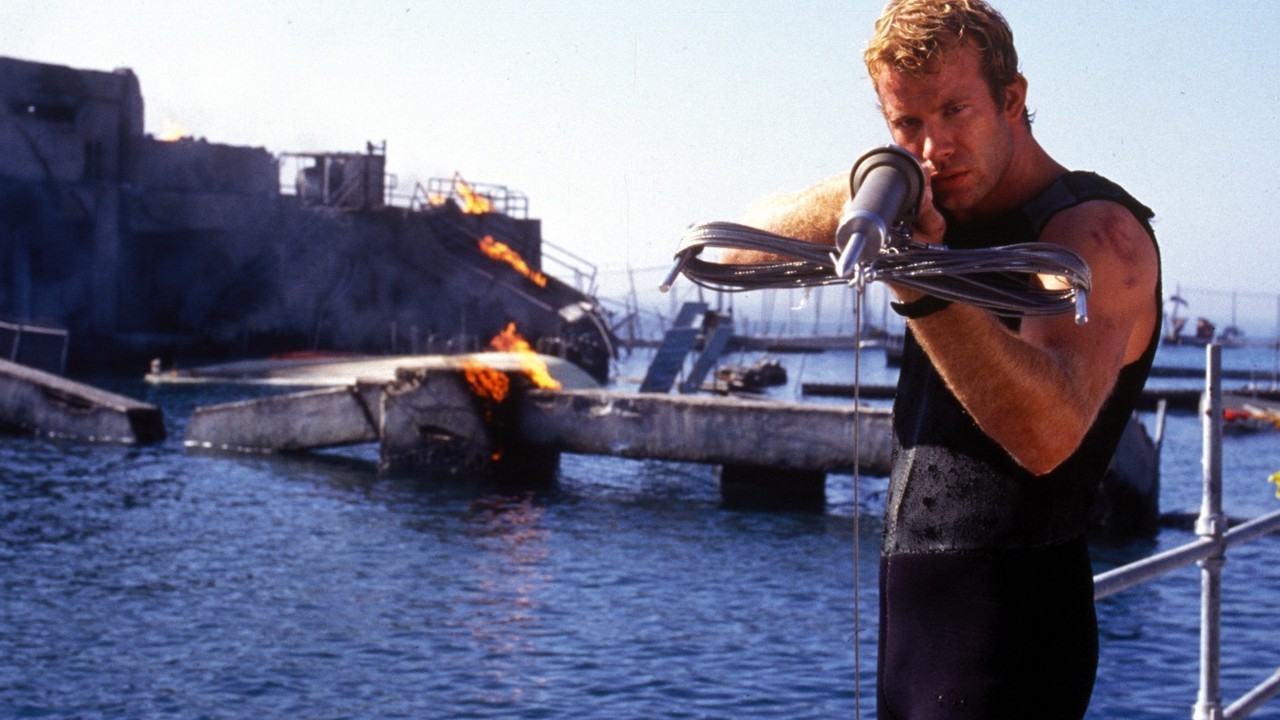
The “Main” theme and “Journey” both really stood out. Each track had a rampant and pounding pace that was often cut with piercing, screechy violin chords. It was super creepy. The tension and suspense from the film’s plot was already high, but with the accompanying score underlying the action, the thrills of the movie became even more apparent.
The Escape Plot
Sharks with a taste for human flesh were a solid premise, to begin with. That being said, Aquatica being on the verge of collapsing in on itself, really amped up the stakes. Not only was the crew fighting against sharks with heightened mental functions, but they also had to maneuver their way out of the sinking science facility. It gave the film a ticking clock. Various factors are working against the crew, and they’re short on time to figure out what they should do. This really helped to up the ante.
The Use Of Animatronics
Despite common contention over whether practical effects are truly better than CGI, this film’s use of animatronic sharks instead of strictly computer-generated sharks was a serious plus. This film released in 1999. It was right on the verge of probably being a movie that relied totally on CGI for rendering the sharks. If this movie had released in the 2000s, it probably would have just used CGI, but since CGI wasn’t that advanced just yet, it’s only present in a handful of scenes. This kept the CGI from getting overwhelming and monotonous. The animatronic sharks were just so lifelike. It was utterly terrifying and awesome.
Where Did Deep Blue Sea Struggle To Break The Surface?
Being that this movie, for all its good traits, was a bad-shark movie, it’s going to have some not so good elements. The primary ones that stand out are the final “sacrifice” and some comical moments that didn’t entirely land.
A Final Sacrifice
Saffron Burrows’s character, Dr. Susan McAlester, used herself as bait to lure back the last genetically modified shark. She did this so the surviving characters were able to kill the final shark as, in the end, the crew took it upon themselves to ensure that these genetically enhanced sharks didn’t make it out to open water. It’s an interesting turn in that Susan couldn’t come to terms with her culpability in the devastation that occurred at Aquatica, and, in the end, she paid the ultimate price, but it felt mildly out of character.
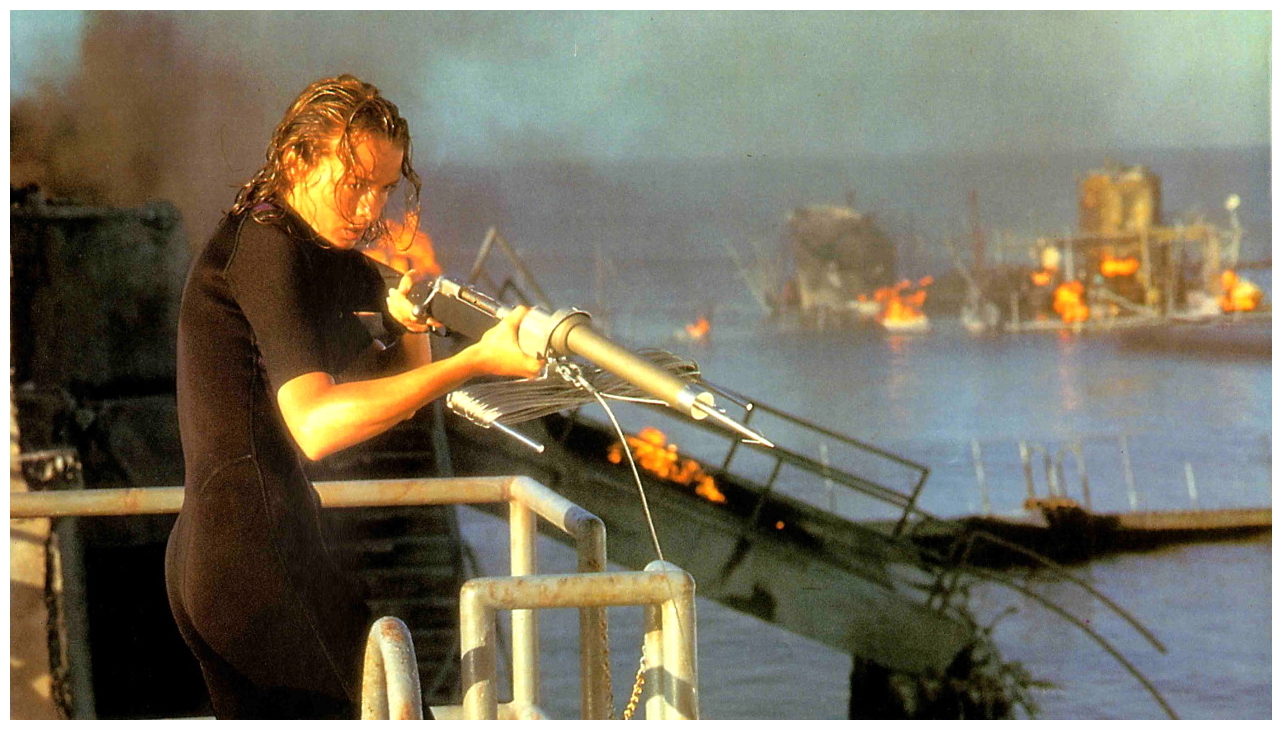
What the film aimed to accomplish, whether it was a sort of redemption or punishment of the character was unclear. As an audience member, you just don’t know how to feel about her death. She’s one of the lead characters so it’s important her death meant something, but the film itself didn’t seem to know what it was supposed to mean.
The One-liners And Quirky Moments
This is where Preacher’s interesting character came into play. He’s used for a lot of comedic relief, as was Michael Rapaport’s character, Scoggins, and sometimes it just didn’t work. Additionally, as one would suspect, Preacher was religious, so he’d resort to prayer in times of fear. However, they’re these really performative and unrealistic versions of prayers that utilized slang and curse words and referred to the sharks as “demon fish,” and it’s just weird. Preacher delivered one of these funky fish sermons right before a pretty meaningful and climactic scene, and it almost killed the tension. It’s just strange and not very helpful to the film.
What To Make Of Deep Blue Sea?
Rarely does the opportunity to summarize everything good and bad about a film through one scene rear its head, so that opportunity will not be squandered here. Preacher, LL Cool J’s character, was in his kitchen that had been flooded after the helicopter crashed into Aquatica. His pet parrot (yes, he had a pet parrot, and it would mock him) was hiding, and Preacher tried to find him. Unbeknownst to Preacher, a shark had swum into the kitchen, and as Preacher was trying to reach out and grab the bird, the shark burst out of the water and ate the poor parrot.
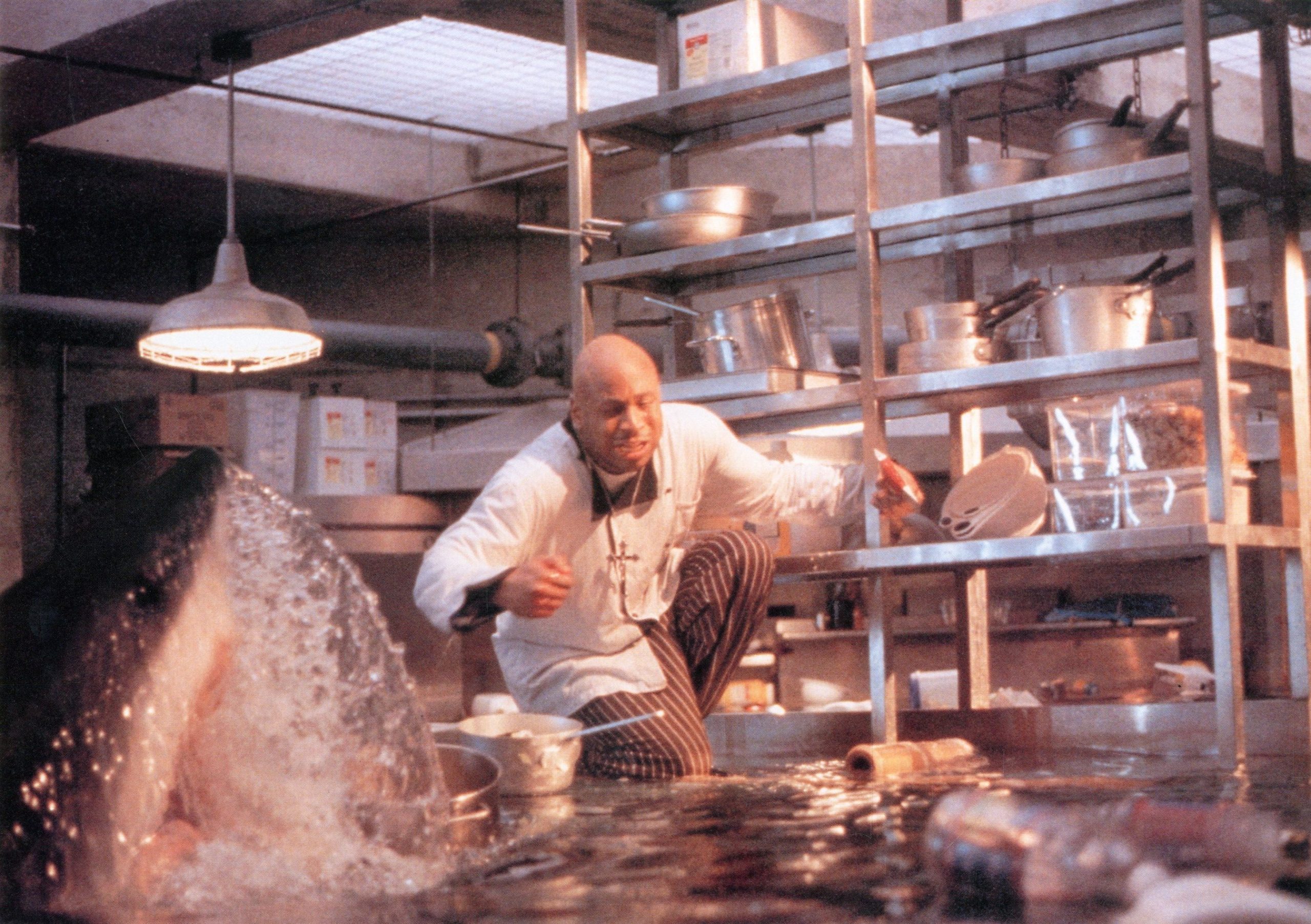
Afterward, the shark turned its focus to Preacher, who had hidden in the oven. The shark, by slamming into the oven repeatedly, turned on the gas. Preacher is forced to chop with an ax at the ceiling of the lower space he’s hidden in to break through to the upper compartment of the oven. After this, he dove out past the shark, ignited his lighter, and threw it back at the shark and running oven stating to the shark, “You ate my bird.” It’s phenomenal but also very nearly preposterous, and that’s exactly why Deep Blue Sea was the best of the best when it comes to bad-shark movies.
